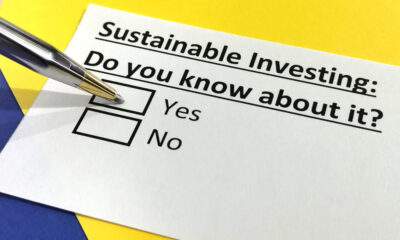

Features
Investing sustainably in an ageing population
An article published in the British Medical Journal last week said that 40% of girls born this year will live to the age of 100 – with boys not far behind. Alex Blackburne looks into how investment funds are seeking to tackle this demographic shift sustainably.
It’s no surprise to hear that our life expectancy is increasing. In just less than a century, the average age of a child born in the UK shot up from 45 (boys) and 49 (girls) in 1901, to 75 and 80 respectively in 1999. Last year, this had risen to 78 and 82.
Improved healthcare for the elderly is one of the main factors behind this dramatic change, which brings about a number of challenges which in turn can become sustainable investment opportunities.
The IM WHEB Sustainability Fund picks out the move towards an ageing population as one of its three core sustainability themes, investing in businesses, technologies and solutions to this demographic shift. But with this comes many investment challenges.
“Clearly cost of healthcare is critical”, says Seb Beloe, partner and head of sustainability research at WHEB.
“This is growing virtually everywhere in the world and is reaching unsustainable levels in the US where healthcare spending is now over 17% of GDP. The 65+ spend on healthcare is three times the rate of the rest of the population and the ratio is six times for 85+.”
But how does this all relate back to sustainable investment? The other two sustainability themes that WHEB’s fund invests in are water resource shortages and climate change: familiar challenges that green and ethical funds regularly seek to address. But a demographic shift towards an ageing population arguably isn’t as common.
“Our approach is to invest in companies providing solutions to sustainability challenges. Demographics – both in terms of an ageing population and the number of people on the planet – in our view represents just such a sustainability challenge”, explains Beloe.
“Healthcare is clearly an area that relates directly to ageing populations. However, there are other investment themes connected to demographic change. For example, the emergence of life-long learning and education for mature students.
“Our quality of life theme is also linked to an ageing population, and covers such areas as healthy living (fitness centres, healthy foods and so on) and care homes for the elderly.”
But these aren’t the only things to consider. A study last year by Aviva found that 29% of employers had experienced a rise in the average age of their workforce in recent years, while 37% expected to witness this shift in the future.
This brings with it concerns over pension deficits – something that British Airways know all too well, after announcing in 2009 that its pension pot was £3.7 billion too low to meet the demands of the next 80 years. Marks & Spencer is another firm to have suffered with this problem.
“This is a particularly acute issue in some sectors and regions – for example, engineers in Germany”, Beloe says.
“The average age of engineers in Germany is increasing and in 2012 was 51. Providing more flexible working arrangements will become an increasingly important aspect of HR management in many businesses.”
Along with food, energy, housing and water, a demographic shift towards an ageing population will place severe strains on the economy and the environment in the coming years. Investing responsibly in technologies and businesses that will help alleviate this pressure is therefore a must; and thankfully, many investment funds have the foresight and nous to allow you to do just that.
Blue & Green Tomorrow has interviewed a number of specialist ethical financial advisers in the past, and they’re located all across the country. Have a look here to find the one nearest to you.
Further reading:
Sustainability funds are ‘helping the world move onto a more sustainable footing’
Why I’ll be investing my children’s junior ISA funds sustainably
What kind of investor are you?
Are we investing in the future we want for our children and grandchildren?
































